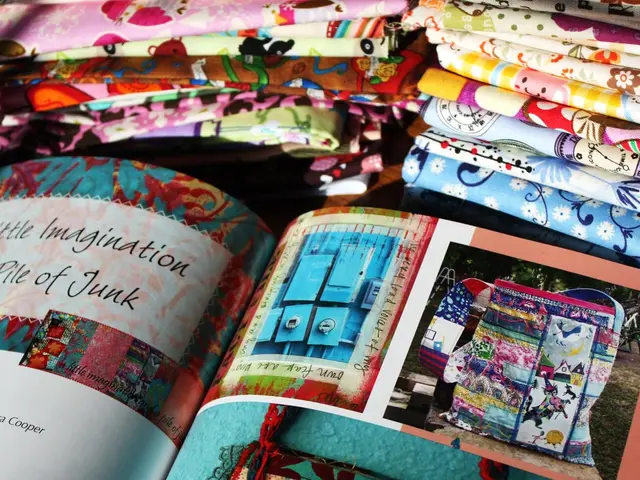The Symbolic Significance of Diamonds: Representations of Healing and Recovery
In the grand tapestry of history, diamonds have sparkled not just as precious stones, but as symbols of life, authority, and the divine. From the sands of ancient Egypt to the coveted adornments of European royalty, the sparkling gemstone has left its indelible mark on our collective consciousness.
In Egypt, diamonds graced religious symbols, representing life and divinity, often integrated within the ankh - a symbol of vitality. This association with sun power and moral clarity was profound, linking the diamond's brilliance to the celestial bodies above.
Greek and Roman literature often viewed diamonds as rare celestial materials, even going so far as to call them "frozen star fragments." Famed scholar Pliny the Elder ranked diamonds as the most powerful material on Earth due to their resistance to heat and iron tools. Roman military leaders donned these gems as symbols of strength in battle and protection from harm.
South Asia, home to both Hinduism and Buddhism, also prized the diamond. In Hindu practices, the gemstone was an essential component of purification rituals, believed to protect the heart; while Buddhist texts, such as the Diamond Sutra, used the stone to symbolize firm insight and clear perception. Indian healers often concocted potions by mixing diamonds with water, claiming the mixture held spiritual or physical healing properties, though modern science has yet to validate these claims.
Chinese records offer little insight into early religious uses of diamonds, but Tibetan Buddhism later treated the gems as symbols of imperishable truth. In Islamic art, diamond patterns graced mosque architecture, both beautifying the spaces and serving as reminders of divine order.
Fast-forward to contemporary times, and the spiritual meaning of a diamond remains a captivating subject. Geometric forms and cuts imbue diamonds with specific symbolic meanings. Round diamonds promote unity and wholeness, while marquise cuts encourage forward movement. Square or rectangular shapes anchor energy, and rings with geometric clarity are favored in rituals focused on grounding or mental structure.
In medieval Europe, the use of diamonds extended beyond adornment to political value, found not just in crowns but also in weapons. They were believed to deflect curses and cut through deceit - practical uses that later gave way to romantic associations. The first recorded diamond engagement ring dates back to 1477, when Archduke Maximilian of Austria proposed with one. The association of diamond engagement rings with love and marriage in Western societies quickly took root and grew, reinforced by large marketing campaigns in the 20th century.
Anthropological data from West African traditions shows raw diamonds used in adulthood rites as signs of personal pressure and endurance. In Native American ceremonies, diamonds occasionally appeared in spiritual communications or vision rituals, their meanings varying but consistently elevating them above mere material value.
Today, in spiritual systems, people often use diamonds in rituals meant for mental awareness or emotional control. Energy healers claim the stones enhance clarity and balance during quiet focus sessions, while crystal healing guides often recommend diamonds during deep focus to maintain intention. Some use diamonds during chakra cleansing, purporting they help remove distractions and bring emotional balance; though these claims are not supported by clinical studies, they are common in alternative health literature.
Science, too, has delved into the mysteries of diamonds. Studies into nitrogen-vacancy centers in diamonds have opened a conversation about whether these gemstones could support investigations into consciousness or brain activity. Whether or not this research leads to groundbreaking discoveries remains to be seen.
Media, belief, and market trends continue to shape the way we perceive diamonds. Once symbols of power and commitment, they have become intertwined with manifestations of social rank and romantic love on social media platforms. The recent wave of lab-produced diamonds has sparked debate among spiritual practitioners: Some early adopters question whether these synthetic stones hold the same symbolic power, while gemologists note that their internal structure remains the same. For some practitioners, the source matters little as long as the intention behind the use remains consistent.
In Abrahamic texts, diamonds are infrequently mentioned by name, but themes of clearness and strength recall their qualities. Christian interpretations sometimes link diamonds with unchangeable divine promises, and in some prayers or visual aids, diamonds serve as metaphors for mental discipline. Modern spiritual collectives across various regions now use diamonds in guided reflection or therapeutic touch sessions, expanding their symbolic meanings beyond traditional religious contexts.
The spiritual meaning of diamonds is ultimately shaped by the setting and user intent. Their rich history spans centuries, encompassing a wide range of interpretations, from ancient protective uses to current symbolic associations with love, strength, and the divine. Despite advancements in science and technology, the perception of diamonds as more than just a precious stone remains deeply ingrained in our collective psyche.
[1] Hall, E. N. (2012). Treatise on Diamonds. McGraw-Hill Education (US).[2] Grinovich, E. (2003). The history of the diamond in Asia. The Mountain Pearls Foundation.[3] Minai, N. (1995). Diamonds and Islam: An Exploration of the Backgrounds of Early Uses of Diamonds for the Ornamentation of Islamic Architecture. Artibus et Historiae, Volume 16, pages 89-111.[4] Gribbin, J. (2013). The History of Diamonds: How a little Piece of Crystal became a Billion Dollar Business. Oxford University Press.
- In meditation and wellness practices, energy healers often recommend diamonds for their claimed ability to enhance clarity and balance during focus sessions, promoting personal growth.
- Ancient Egyptians associated diamonds with life, divinity, and the celestial bodies, integrating them into religious symbols such as the ankh.
- In educational and self-development materials, some people use diamonds symbolically, learning about the gemstones' rich history for spiritual inspiration and healing.
- Modern scientific studies explore the potential of nitrogen-vacancy centers in diamonds for investigations into consciousness and brain activity, merging spirituality and science.
- Social media platforms and entertainment outlets have perpetuated the romantic associations of diamonds with commitment and love, influencing mental-health beliefs and perceptions.
- In entertainment and celebrity culture, diamonds have been used as extravagant ornaments, reinforcing the gemstones' symbolic connections to wealth, power, and fame.








